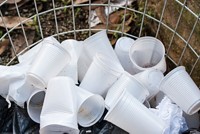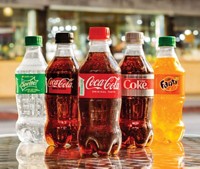Advertisement
Grab your lab coat. Let's get started
Welcome!
Welcome!
Create an account below to get 6 C&EN articles per month, receive newsletters and more - all free.
It seems this is your first time logging in online. Please enter the following information to continue.
As an ACS member you automatically get access to this site. All we need is few more details to create your reading experience.
Not you? Sign in with a different account.
Not you? Sign in with a different account.
ERROR 1
ERROR 1
ERROR 2
ERROR 2
ERROR 2
ERROR 2
ERROR 2
Password and Confirm password must match.
If you have an ACS member number, please enter it here so we can link this account to your membership. (optional)
ERROR 2
ACS values your privacy. By submitting your information, you are gaining access to C&EN and subscribing to our weekly newsletter. We use the information you provide to make your reading experience better, and we will never sell your data to third party members.
Environment
A Miss On Plastic Waste
August 19, 2013
| A version of this story appeared in
Volume 91, Issue 33
The business article on plastic waste misses a big part of the problem: our addiction to single-use throwaway items (C&EN, June 24, page 26). Refillable beverage containers save money and materials. Single-use throwaway items should be banned or taxed to encourage a shift back to reusables. Ireland achieved a 90% reduction on the use of plastic grocery bags by putting a tax on them.
A system in the Netherlands monitors, by gas chromatography, the headspace in returned water bottles. If anything unusual is found, a jet of air blows the bottle off the line. Bottles that pass the test are reused. General Electric marketed bisphenol polycarbonate bottles for orange juice that averaged 25 return trips and half-pint containers for milk that averaged 100 return trips. After this, the containers were made into crates to carry new bottles. Customers who brought in a used container received a discount on buying a new one. Although this polymer is no longer accepted for use, Eastman Chemical’s replacement copolyester, Tritan, could be used in the same way.
Bottled water is a waste of materials, energy, and dollars. Some cities, including San Francisco, have banned it already.
Albert S. Matlack
Hockessin, Del.





Join the conversation
Contact the reporter
Submit a Letter to the Editor for publication
Engage with us on Twitter